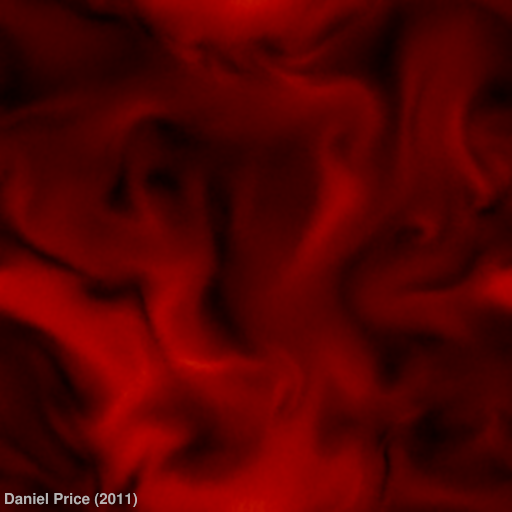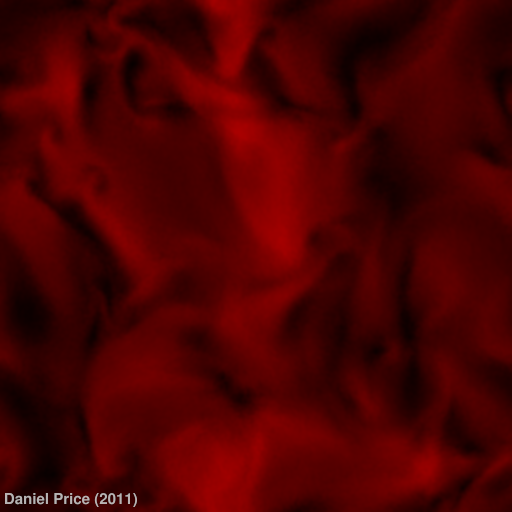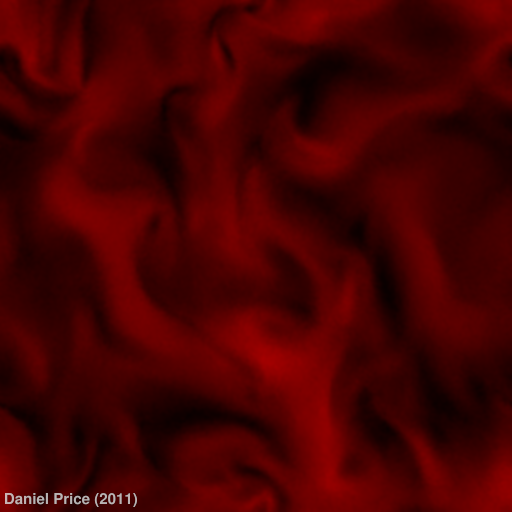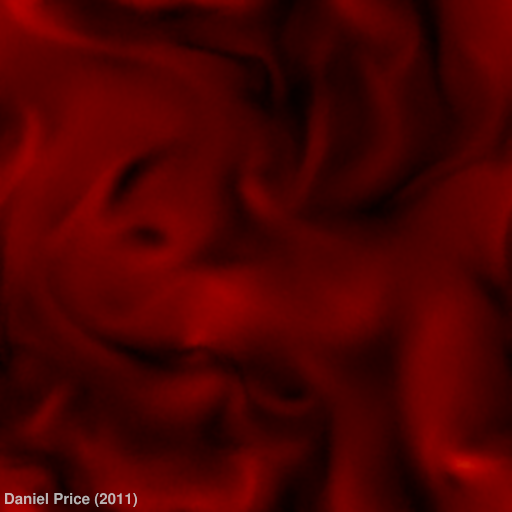Resolving high Reynolds numbers in SPH simulations of subsonic turbulence
Daniel J. Price (Monash Centre for Astrophysics)
[ Full text pdf (833Kb) ] accepted (4th Nov 2011) for publication in MNRAS Letters (arXiv:1111.1255)
Abstract
Accounting for the Reynolds number is critical in numerical simulations of turbulence, particularly for subsonic flow. For Smoothed Particle Hydrodynamics (SPH) with constant artificial viscosity coefficient α, it is shown that the effective Reynolds number in the absence of explicit physical viscosity terms scales linearly with the Mach number — compared to mesh schemes, where the effective Reynolds number is largely independent of the flow velocity. As a result, SPH simulations with α=1 will have low Reynolds numbers in the subsonic regime compared to mesh codes, which may be insufficient to resolve turbulent flow. This explains the failure of Bauer and Springel (2011, arXiv:1109.4413v1) to find agreement between the moving-mesh code AREPO and the GADGET SPH code on simulations of driven, subsonic (v ~ 0.3 cs) turbulence appropriate to the intergalactic/intracluster medium, where it was alleged that SPH is somehow fundamentally incapable of producing a Kolmogorov-like turbulent cascade. We show that turbulent flow with a Kolmogorov spectrum can be easily recovered by employing standard methods for reducing α away from shocks.
Images: | |

|

|

|

|

|

|
Images and movies were produced using SPLASH, a free visualisation tool for SPH data.
